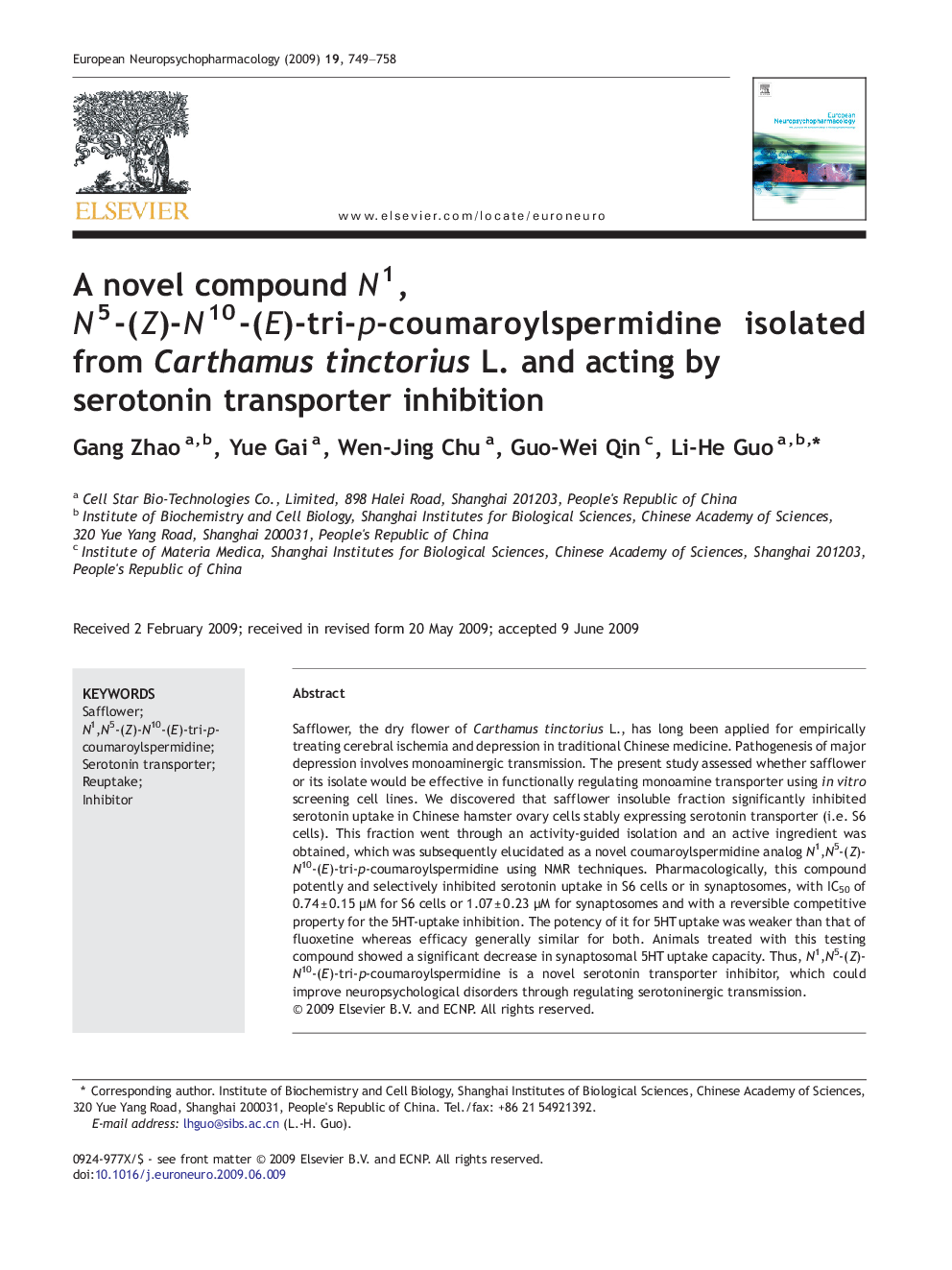| Article ID | Journal | Published Year | Pages | File Type |
|---|---|---|---|---|
| 319014 | European Neuropsychopharmacology | 2009 | 10 Pages |
Safflower, the dry flower of Carthamus tinctorius L., has long been applied for empirically treating cerebral ischemia and depression in traditional Chinese medicine. Pathogenesis of major depression involves monoaminergic transmission. The present study assessed whether safflower or its isolate would be effective in functionally regulating monoamine transporter using in vitro screening cell lines. We discovered that safflower insoluble fraction significantly inhibited serotonin uptake in Chinese hamster ovary cells stably expressing serotonin transporter (i.e. S6 cells). This fraction went through an activity-guided isolation and an active ingredient was obtained, which was subsequently elucidated as a novel coumaroylspermidine analog N1,N5-(Z)-N10-(E)-tri-p-coumaroylspermidine using NMR techniques. Pharmacologically, this compound potently and selectively inhibited serotonin uptake in S6 cells or in synaptosomes, with IC50 of 0.74 ± 0.15 µM for S6 cells or 1.07 ± 0.23 µM for synaptosomes and with a reversible competitive property for the 5HT-uptake inhibition. The potency of it for 5HT uptake was weaker than that of fluoxetine whereas efficacy generally similar for both. Animals treated with this testing compound showed a significant decrease in synaptosomal 5HT uptake capacity. Thus, N1,N5-(Z)-N10-(E)-tri-p-coumaroylspermidine is a novel serotonin transporter inhibitor, which could improve neuropsychological disorders through regulating serotoninergic transmission.
